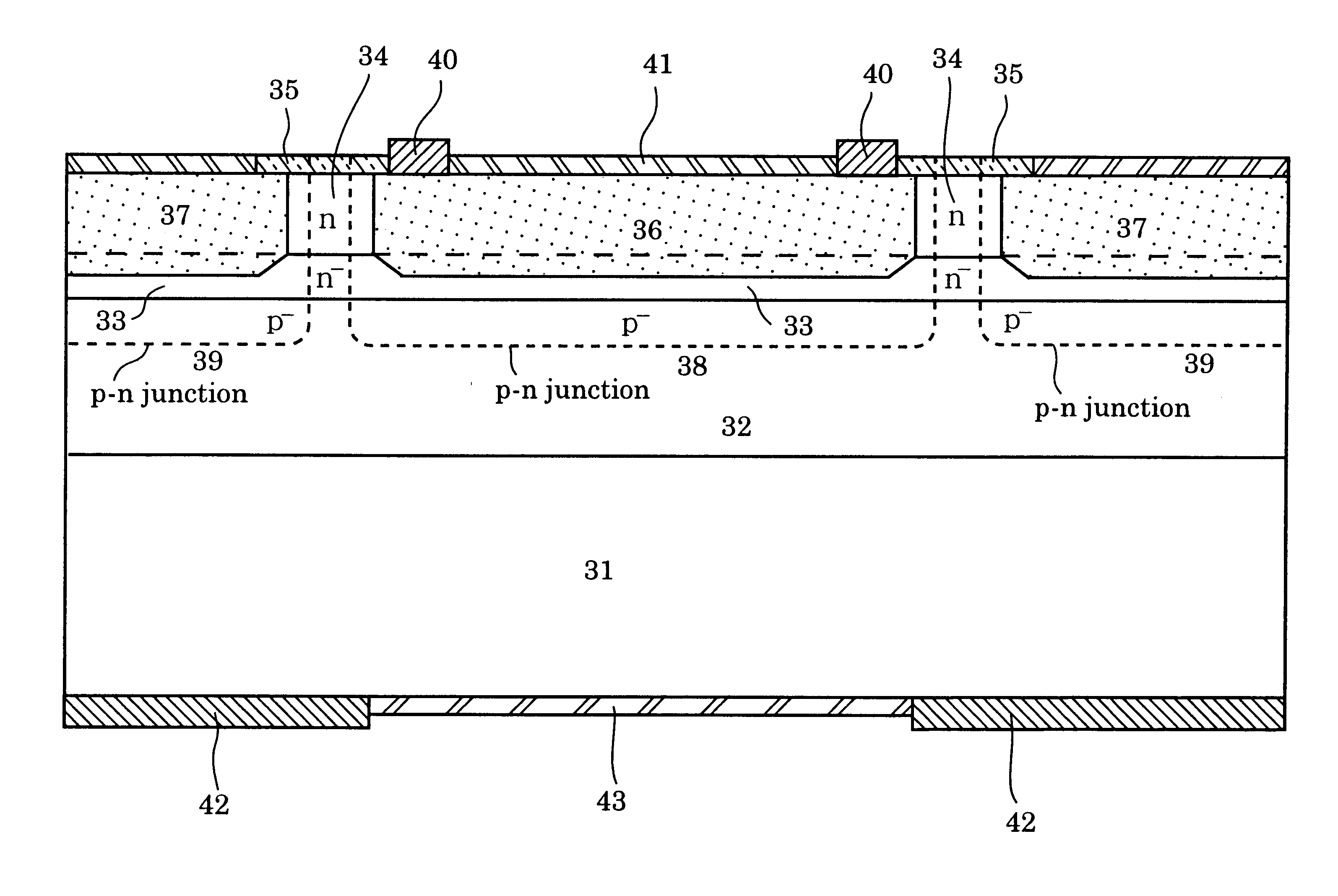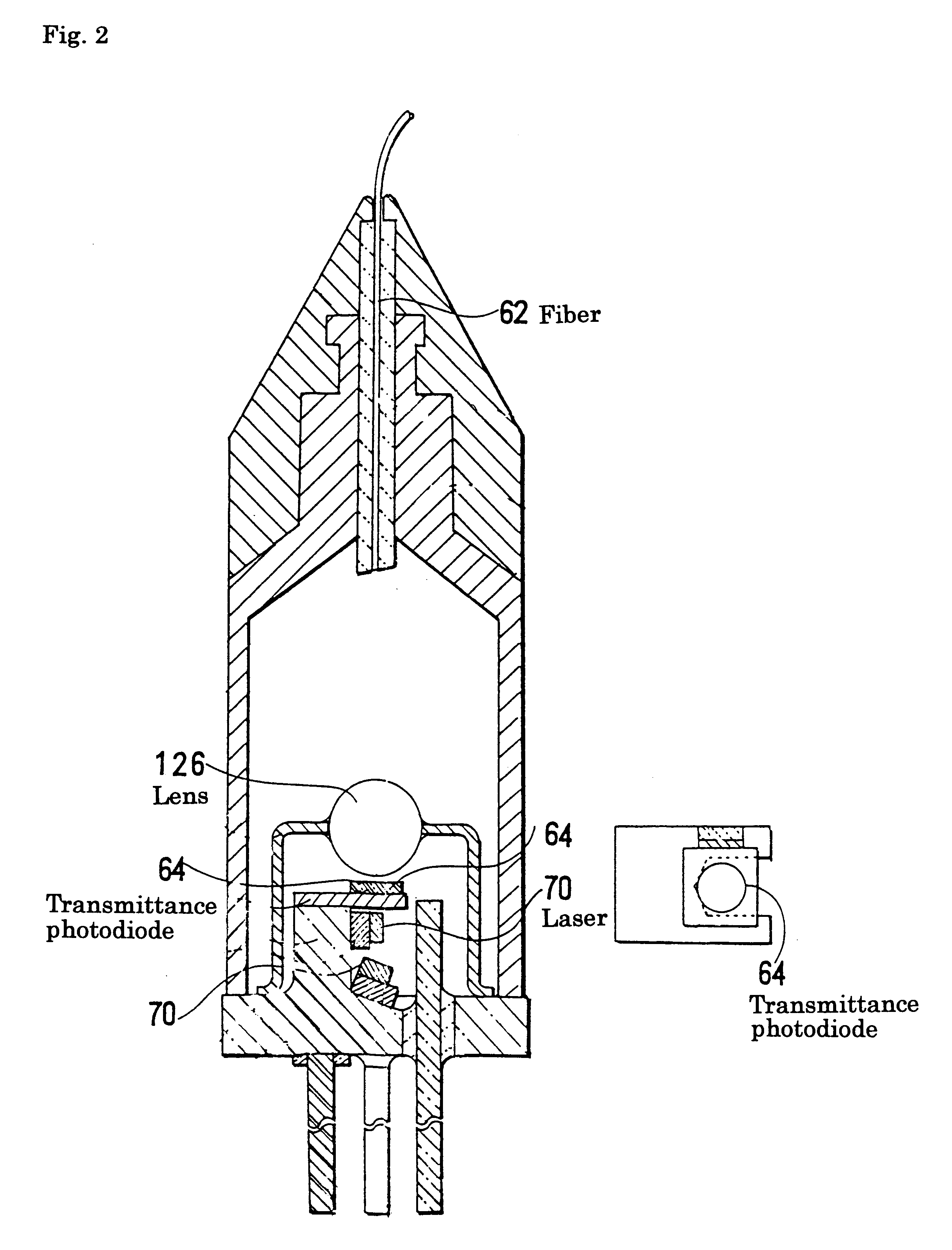Photodiode with buffer layer
a photodiode and buffer layer technology, applied in the field of photodiodes, can solve the problems of increasing the installation cost of fibers, increasing the installation cost of optical couplers, and increasing the installation cost at subscribers
- Summary
- Abstract
- Description
- Claims
- Application Information
AI Technical Summary
Benefits of technology
Problems solved by technology
Method used
Image
Examples
Embodiment Construction
The following example has a quaternary-InGaAsP absorption layer with a fundamental absorption-edge wavelength of .lambda.g=1.42 .mu.m. As shown in FIG. 7, the absorption layer has thickness of 1 .mu.m to achieve 50-percent transmittance for a 1.31 .mu.m wave. When InGaAs is used as the absorption layer, the thickness should be 0.5 to 0.9 .mu.m to fulfill transmittance of 30 to 50%. Other aspects of the two materials are the same, and the following description is given on InGaAsP.
The concept of the present invention is well explained by comparing the layer thickness and impurity distribution shown in FIG. 7 with those in FIG. 3 for a conventional photodiode. A thinner absorption layer is one of the features of the invention. A thicker buffer layer, obtaining extra thickness from the decrement of the absorption-layer thickness, secures the formation of a p-n junction within the buffer layer.
The structure shown in FIG. 7 is embodied in FIG. 8, which shows an actual structure of the hal...
PUM
 Login to View More
Login to View More Abstract
Description
Claims
Application Information
 Login to View More
Login to View More - R&D
- Intellectual Property
- Life Sciences
- Materials
- Tech Scout
- Unparalleled Data Quality
- Higher Quality Content
- 60% Fewer Hallucinations
Browse by: Latest US Patents, China's latest patents, Technical Efficacy Thesaurus, Application Domain, Technology Topic, Popular Technical Reports.
© 2025 PatSnap. All rights reserved.Legal|Privacy policy|Modern Slavery Act Transparency Statement|Sitemap|About US| Contact US: help@patsnap.com



